Imperia (Porto Maurizio) and Rome: Saint Leonard of Port Maurice
During my travels and visits to the sanctuaries and shrines of Italy I was especially looking forward to seeing the places connected with St. Leonard of Port Maurice. This saint, whom St. Alphonsus de Liguori rightly called the greatest missionary of the 18th century, was one of the most famous mission preachers in the history of European Christendom.
St. Leonard converted innumerable souls to God during his life – and he continues to do so even today. I owe a special gratitude to this holy Franciscan whose famous sermon was instrumental in my own conversion nearly a decade ago. Today, when so many souls are in desperate need of conversion, St. Leonard’s name is barely known, even among practicing Catholics. If this post can help to remedy this neglect in some small way, it will have fulfilled its purpose.
SAINT LEONARD OF PORT MAURICE – THE GREATEST MISSIONARY OF THE 18TH CENTURY
Native home: Chiesetta e Casa Natale di San Leonardo (Via Achille Vianelli, Imperia; Casa Natale di San Leonardo da Porto Maurizio)
Convent: San Bonaventura al Palatino (Via di San Bonaventura 7, Rome; Convento di San Bonaventura al Palatino)
Paul Jerome Casanova was born on December 20, 1676, in Porto Maurizio (today’s Imperia), then part of the Republic of Genoa. His father, a ship captain, was a man of faith; five of his six children went on to become religious. When the boy who would become St. Leonard was 13 he went to study at the Roman College in Rome, the city where his uncle lived. He thought of entering the medical profession but God had other plans for him, wanting to make him a doctor of souls.
One day he happened to visit the church connected with the Franciscan convent of St. Bonaventure on the Palatine hill just as the friars were chanting Compline. At the words “converte nos Deus, salutaris noster” (convert us, oh God, our salvation) the young man was converted from his worldly aspirations to supernatural ones. Listening to God’s call, he entered the reform branch of the Franciscan Order.
He took his habit in 1697, taking the name of Leonard. After making his novitiate at Ponticelli he completed his studies at the principal house of the reform branch at San Bonaventura al Palatino in Rome. After his ordination (1703) he remained there as a professor. Leonard longed to go to China as a missionary, for it was his great desire to convert souls for Christ and to shed his blood for the Faith. However, he was soon seized with a severe gastric hemorrhage, becoming so ill that he was sent to his native Porto Maurizio in the hope that he might recover his health.
St. Leonard did indeed recover, and he attributed his restoration to health to Our Lady’s intercession. During his illness he had promised that, should his prayers for recovery be granted, he would devote his life to the conversion of sinners. And he kept his promise, spending 44 years preaching popular missions, covering every section of Italy and the island of Corsica.
Leonard at one time felt certain distaste for mission work but, after his superiors laid this duty upon him, he understood it to be the Will of God, and he consecrated himself whole-heartedly to it, becoming one of the greatest missionaries and apostles in the history of the Church. He chose as the patron of his missions the great Dominican saint, preacher and miracle worker St. Vincent Ferrer (whose picture he also used to bless the sick).
Around the age of 30 he began to preach in Port Maurice and its vicinity. Leonard’s preaching was marked by many extraordinary conversions. The power of his words coupled with his holiness and extraordinarily austere and penitential life made a deep impression on even the most hardened sinners.
St. Leonard used to preach to many thousands in open squares in every town where he went; the churches were too small to contain the multitudes. Entire towns flocked to hear his sermons so that it was not uncommon to see crowds of 15 to 20 thousand gathering to listen to the saint. Miraculous conversions followed his preaching everywhere.
St. Leonard preached several times a day, heard confessions for countless hours, gave advice, established peace between warring factions – all without neglecting his prayers (including three hours of mental prayer each day), celebrating daily Mass with great devotion and precision, and saying the Divine Office on his knees.
The saint stressed the importance of the practice of maintaining oneself in the presence of God at all times. He recommended people to exclaim many times throughout the day, and especially at the beginning of every action, “my Jesus, mercy.” That way they can pray always, even amidst their daily occupations, and do everything with pure intention, looking to God alone in every action they perform.
In 1716 he founded the Solitude of St. Mary of Incontro near Florence, a House of Retreat where the friars could retire from time to time to renew their spiritual strength, applying themselves seriously, in silence and great austerities, to the work of their own sanctification. The religious would withdraw there in turn, to then return to their convents and missionary labors filled with renewed zeal to work for the glory of God and salvation of souls.
Leonard was the superior in Florence and Prato for over 20 years before returning to Rome in 1736 to become Guardian of the convent of St. Bonaventure. He was an austere, reserved and silent man, but also kind and patient in his treatment of others.
The devotion to the Blessed Virgin Mary (and in particular the Immaculate Conception), perpetual adoration of the Blessed Sacrament, and devotion to the Sacred Heart of Jesus were some of the topics he promoted. It was St. Leonard who composed, especially as a reparation for the sin of blasphemy, the Divine Praises we say at the end of every Benediction (“blessed be God, blessed be His Holy Name…”).
It is to St. Leonard we owe the devotion of the Stations of the Cross. Wherever he went he promoted the Via Crucis. Not a mission went by without him leading the people in this pious meditation on the Passion of our Lord. St. Leonard erected 571 Stations of the Cross throughout Italy, including the famous Stations at the Colosseum in Rome.
While St. Leonard’s great life-work were the missions, he also preached many retreats both to religious and lay people. The theme was most often the Passion of Christ. He wrote that one of the cures for the ills of men and of society was a daily meditation on the Passion. It would bring people back in touch with reality, rearrange their priorities, and put everything into proper perspective, causing them to grow in love for Christ.
St. Leonard’s love for Our Lady led him to ardently desire to see – and do his utmost to procure – the dogmatic definition of her Immaculate Conception. He called this the most important cause in the world, because every other good depended on it: peace, happiness, triumph over heresies, triumph of the Church. He urged prelates to petition Rome for this. [The dogma of the Immaculate Conception would be solemnly proclaimed a century later, in 1854, by Pope Pius IX.]
The strains of his missionary labors and severe mortifications completely exhausted St. Leonard’s body. After his missions in Lucca and Bologna he was stricken by fever but nevertheless journeyed back to Rome in obedience to the wishes of Pope Benedict XIV who made him promise he would not die in any other city but Rome. Even in his last days, half-dead, the saint insisted on saying Mass, though with the greatest difficulty, for, “a single Mass is worth more than all the wealth of the world.”
On Nov 26, 1751, St. Leonard arrived at his beloved monastery of St. Bonaventure in Rome, dying that same evening at 11pm, at the age of 75. Great crowds came to see and venerate his body. God glorified him in life but still more after his death by numerous miracles. His (still partially incorrupt) body was kept at the high altar of the church of San Bonaventura at Palatino until 1997 when it was transferred to his native town. There it can be seen, in a glass urn, at the cathedral of Imperia Porto Maurizio. Only a relic of one of his ribs remains at the church of St. Bonaventure in Rome. At the adjacent convent one can visit the saint’s former cell (transformed into a little museum).
St. Leonard was beatified by Pius VI in 1796. Blessed Pius IX, a Franciscan tertiary, canonized him in 1867. He was named the patron saint of parish missionaries by Pius XI.
St. Leonard left us many writings, the most well known of which is his beautiful book about “the most precious treasure we have on earth” – the Mass (“The Hidden Treasure”). His sermons, letters, ascetic and devotional writings have been preserved but only a small part has been translated to English. His most famous sermon, “The Little Number of Those Who Are Saved”, was the one he relied on for the conversion of great sinners.
His feast day is November 26.
Sancte Leonarde, ora pro nobis!
—
St. Leonard of Port Maurice:
Life of St. Leonard of Port Maurice (Fr. D. Devas) – pdf, text, epub, kindle format
The Life of Blessed Leonard of Port Maurice (G. Alapont) – pdf, text, epub, kindle format
The Hidden Treasure of the Immense Excellence of the Holy Sacrifice of the Mass (St. Leonard) – pdf, text, kindle format
The Little Number of Those Who Are Saved (St. Leonard’s sermon) – pdf; or read online here; or audio here
St. Leonard’s Via Crucis – read online

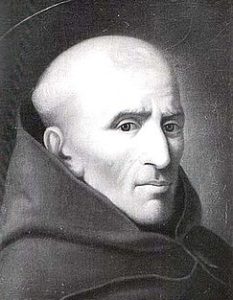
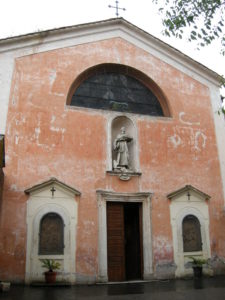
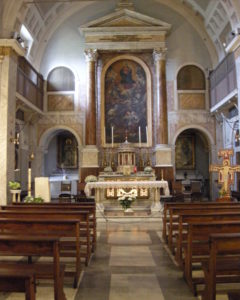
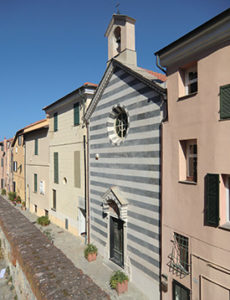
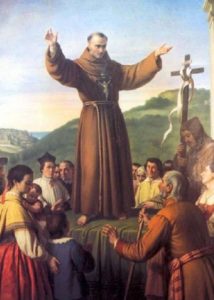
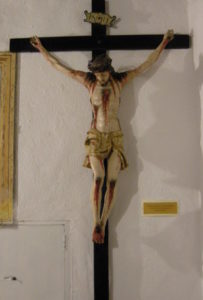

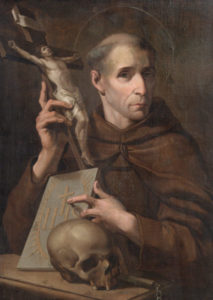
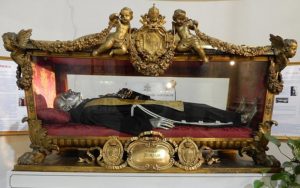
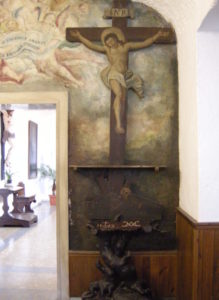
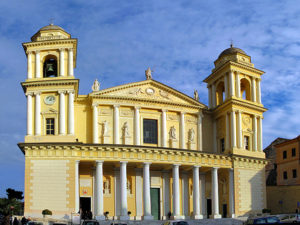
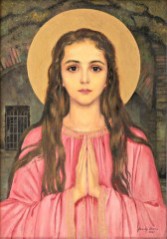
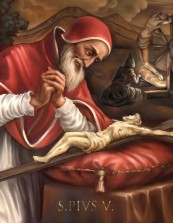
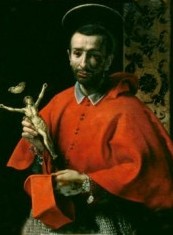
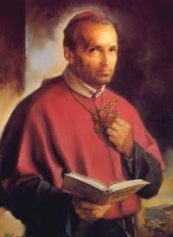
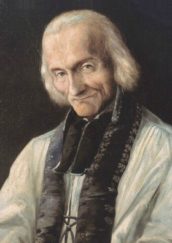
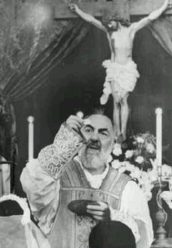
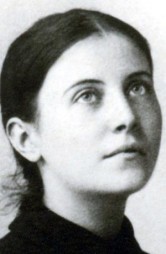
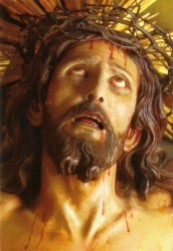
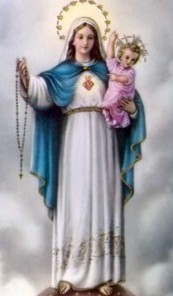
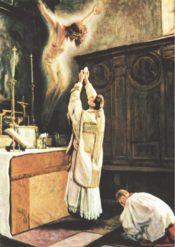
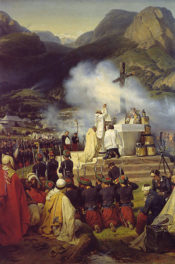
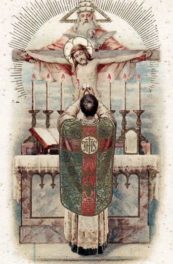
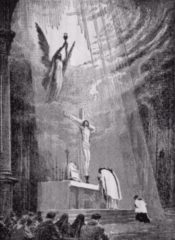
Pingback: Adoring Christ’s Holy Face | Catholic Headline Agency
Hello,
Happy St. Leonard Feastday! Thank you for this informative article about his life.
Where can I download The counsel to confessors of St Leonard?
Here it is: https://archive.org/details/counsels-to-confessors. God bless.